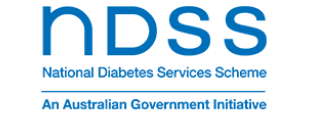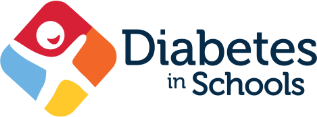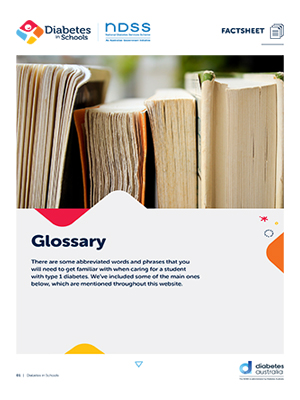There are some abbreviated words and phrases that you will need to get familiar with when caring for a student or child with type 1 diabetes.
We’ve included some of the main ones below which are mentioned throughout this website.
Basal insulin
The insulin injected through a pump or an injection the body requires when sleeping and in between meals.
Bolus insulin
The insulin taken via a pump or injection at mealtimes.
BG
Blood Glucose.
BGLs
Blood Glucose Levels.
Camp management plan
A template documenting additional student support requirements such as overnight care routines. This may include additional emergency management arrangements if the campsite is in a remote location.
Correction dose
An extra bolus of insulin given to treat a high blood glucose level.
CGM
Continuous Glucose Monitor. A device worn by a student which continually monitors their glucose levels and sends the data to a phone, pump or receiver. CGM can give alerts if levels are out of range.
Diabetes management plan (DMP)
A plan written by the clinical treating team and the young person’s family/carer to provide an individualised guideline for supporting the day to day management of a student’s diabetes in the educational setting and may contain some instructions concerning this routine management.
Diabetes school action (or emergency) plan
Provides clear step-by-step directions, individualised for a student, on how to safely manage and or treat a low (hypoglycaemia) or high (hyperglycaemia) glucose level.
Clinical treating team
Health professionals involved in the young person’s diabetes care (paediatrician or endocrinologist, diabetes educator, dietitian, psychologist, social worker).
Flash glucose monitoring
A monitoring device worn by the student which continually measures glucose and displays the glucose level when the Flash monitor is swiped over the sensor.
Glucagon
A hormone produced by the pancreas that causes the liver to release glucose and raise blood glucose levels. Manufactured glucagon may be injected to help raise blood glucose levels in a person experiencing a severe hypoglycaemic (low blood glucose) event and unable to swallow.
Hypo
Hypoglycaemia or blood glucose levels below target range. Hypoglycaemia occurs when blood glucose levels become too low. This can be caused by missing a meal, having too much insulin or not eating enough carbohydrates for a given dose of insulin or unplanned physical exercise. Symptoms can include weakness, trembling or shaking, sweating, irrational behaviour, confusion, irritability, crying and dizziness. It is defined as a blood glucose level below 4.0 mmol/L*.
High
Hyperglycaemia or blood glucose levels above target. Hyperglycaemia occurs when blood glucose levels become too high. It can be caused by not enough insulin or missing an insulin injection, eating extra carbohydrates, sickness or an infection or reduced physical activity. Symptoms can include excessive thirst, tiredness, blurred vision, frequent urination and lack of concentration. It is defined as blood glucose levels recurrently > 15 mmol/L or child is unwell or vomiting with a single blood glucose level > 15 mmol/L.
Hypo kit
A pack containing fast-acting and slow-acting carbohydrate food and is easily accessible by students and staff for prompt treatment of hypoglycaemia in line with the Diabetes Action Plan.
Insulin
A hormone produced by the pancreas. The body uses insulin to move glucose from the bloodstream into cells where it is used as energy. All people with type 1 diabetes and some people with type 2 diabetes need to take insulin. Some people are best treated with multiple daily injections while others use an insulin pump. There are also a number of different types of insulin. There is no one-size-fits-all approach and the decision about what insulin therapy is best for a person should be made by the person, their family and their clinical treating team.
Insulin pen
Pen-like devices which contains insulin and to which a needle is attached. An insulin pen is used to inject insulin under the skin. These have largely replaced syringes.
Insulin pump
A small computerised device used to deliver insulin, as an alternative delivery method to injections.
Ketones
Acidic products that are formed when fat is used as an alternate energy source to glucose. This occurs when there is a lack of insulin in the blood stream which prevents glucose in the blood to being used for energy. Ketones can be detected in both urine and blood and medical advice is required when levels are above 0.6 mmol/L.
Lancet device
A blood sampling device to prick the skin to produce a blood drop for blood glucose checking.
Low
Hypoglycaemia or blood glucose levels below target. Hypoglycaemia occurs when blood glucose levels become too low. This can be caused by missing a meal, having too much insulin or not eating enough carbohydrates for a given dose of insulin or unplanned physical exercise. Symptoms can include weakness, trembling or shaking, sweating, irrational behaviour, confusion, irritability, crying and dizziness. It is defined as a blood glucose level < 4.0 mmol/L *.
Designated staff
Trained school staff who have voluntarily agreed to have a direct role in providing treatment and support to students with type 1 diabetes as prescribed by the Diabetes Management Plan.
Standard precautions
Work practices that assume that all blood and body fluids are potentially infectious. Standard precautions are used as a first-line approach to preventing infection and should be adopted for contact with all blood and body fluids.
Type 1 diabetes
An auto-immune condition that occurs when the immune system damages the insulin-producing cells in the pancreas. Insulin is the hormone that controls blood glucose levels. People with type 1 diabetes depend on daily insulin treatment to replace the insulin their body cannot produce.
Type 2 diabetes
Occurs when either insulin is not working effectively (insulin resistance) or the pancreas does not produce sufficient insulin (or a combination of both). People with type 2 diabetes manage their condition with a combination of healthy eating, physical activity and weight reduction and, in some cases, medication, which could include tablets or insulin.



